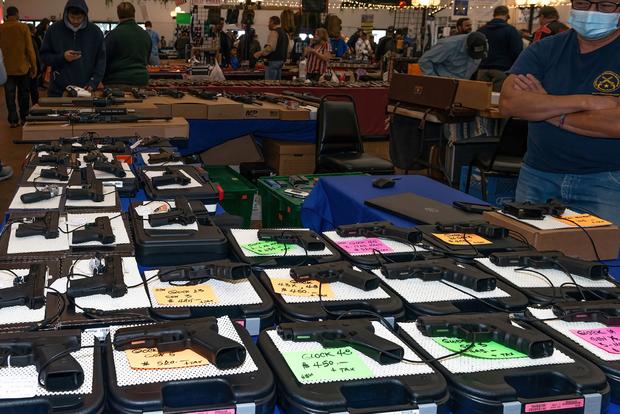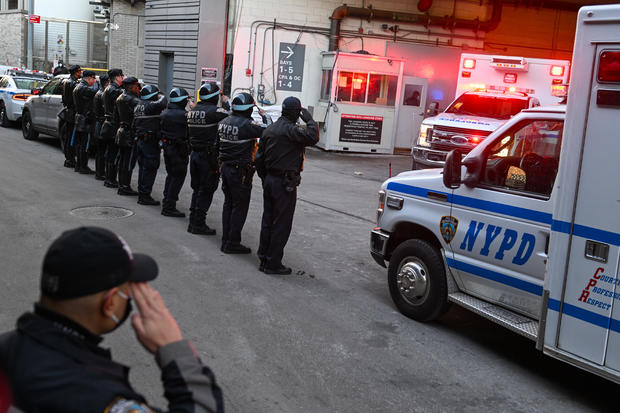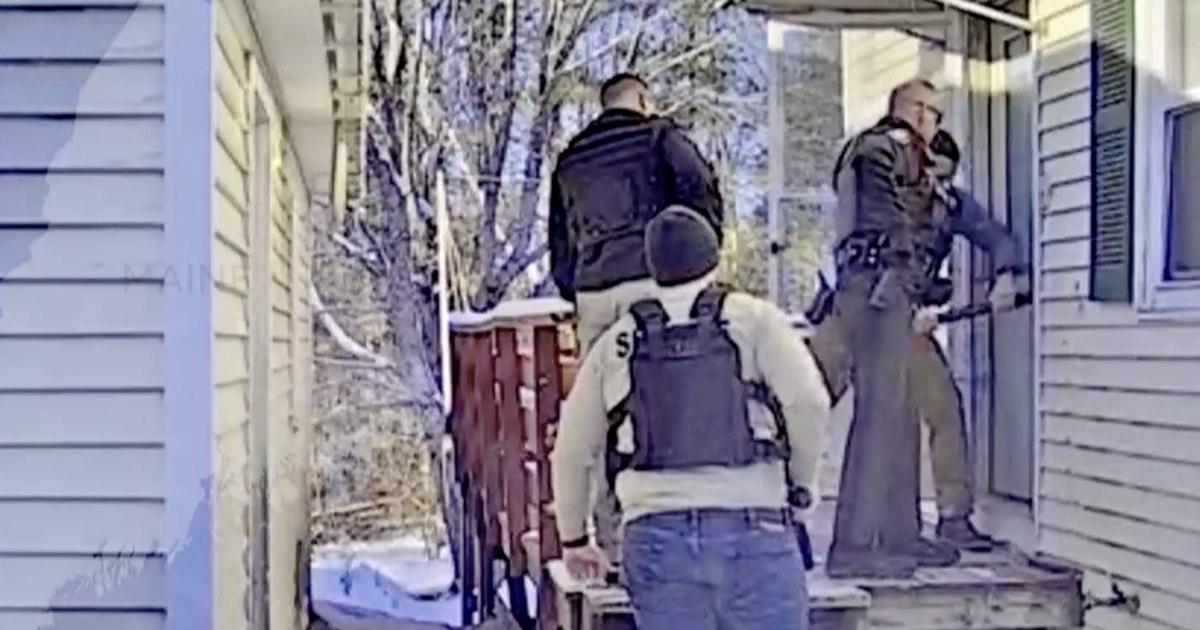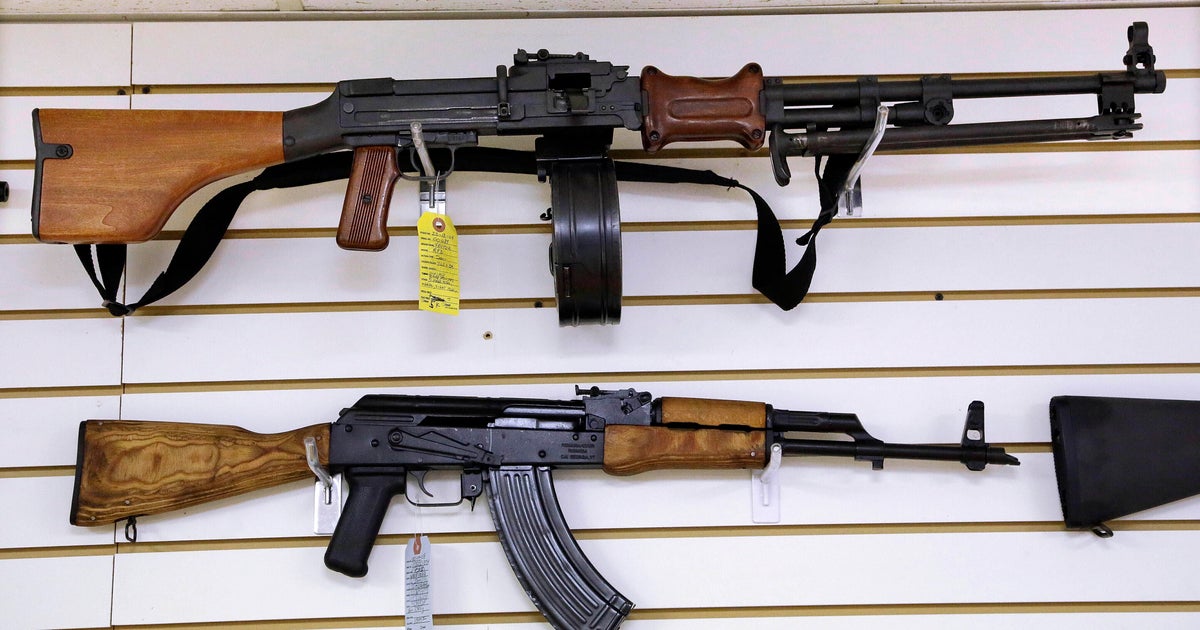Homicides in major American cities increased in 2021, new study finds
Homicides in major American cities ticked up in 2021, with a 5% increase from 2020 and a 44% increase over 2019, according to a new analysis of crime trends released Tuesday by the Council on Criminal Justice (CCJ).
The study drew on crime data from 22 cities nationwide — including Atlanta, Detroit, Baltimore, Chicago, Denver, Memphis, San Francisco, Washington, D.C., and Philadelphia — and found an additional 218 murders last year, compared to 2020. And while the overall increase in the homicide rate slowed, murder rates in St. Petersburg, Florida, (108%) and Austin (86%) skyrocketed, while Washington, D.C., (16%) also recorded a notable increase.
Six of the 22 cities saw their murder rates drop, however, with sizeable dips in Seattle (25%) and Omaha (24%).
Experts believe pandemic pressures and changes in policing tactics have contributed to the uptick in homicides.
Despite the recent increase, murder rates have dropped considerably across the United States since the 1990s. The 22 cities included in the study recorded roughly half the number of murders documented 29 years ago — 15 deaths per 100,000 residents in 2021 versus 28 per 100,000 in 1993.
a researcher behind the study noted that the reasons for the increases in recent years are not necessarily static. In 2020, homicides spiked following the police killing of George Floyd, which sparked calls for racial justice and police reform, followed by unrest in cities across the country.
"The social unrest after the George Floyd killing in Minneapolis very likely played a role in [increased homicides], but differences across cities in 2021 suggests that local factors are now becoming more important," said Dr. Richard Rosenfeld, a criminologist at the University of Missouri-St. Louis who authored the CCJ study.
Rosenfeld's research suggests increased availability of both legal and illegal firearms has played a role in driving up homicide rates.
Aggravated and gun assault rates continued to grow in 2021, with gun assaults jumping 8% last year. Researchers noted that murders are increasingly being carried out with firearms. According to Tuesday's study, more than three-quarters of reported murders in 2021 were committed with a gun.
"In 2021, we saw a record fraction of homicides committed with a firearm," Rosenfeld said.
"The firearms that make it into circulation in nearly all cases are legally purchased firearms," he added. "The question then becomes, how do those legally purchased firearms make their way into the hands of people who would use them in a crime?"
There is currently no nationwide database tracking gun purchases, but data from the Bureau of Alcohol, Tobacco, Firearms and Explosives (ATF) revealed that in 2020, nearly twice as many guns were recovered by police within a year of purchase than in 2019. More than 68,000 guns exhibiting a "time-to-crime" of less than seven months were recovered in 2020.
Of the ATF's 40,656 criminal investigations in Fiscal Year 2021, a whopping 37,494 involved firearms.
The FBI keeps the most comprehensive data on violent crime. Approximately 85% of law enforcement agencies — more than 18,000 total nationwide — handed over their 2020 crime data to the FBI, last year. The bureau plans to release its 2021 Uniform Crime Report later this year.
According to the FBI, the murder rate rose nearly 30% nationwide from 2019 to 2020, the largest year-to-year spike since the federal government began tracking violent crime in the 1960s.
The FBI arrested roughly 7,500 violent offenders, including gang members, in fiscal year 2021, according to the Department of Justice. FBI agents assigned to the bureau's Violent Crime and Safe Street Task Forces — a unit that is roughly 2,500 officers strong — seized over 4,900 firearms.
Last weekend, violent crime in major cities took center stage yet again, after two New York City Police officers — Wilbert Mora, 27 and Jason Rivera, 22 — were fatally shot Friday while responding to a call from a mother in a dispute with her son.
In Houston, police corporal Charles Galloway, 47, was shot and killed early Sunday morning during a traffic stop. Hours later, a D.C. police officer was injured in the line of duty after a man pulled out a firearm and fired multiple shots at law enforcement.
And in Chicago, an 8-year-old girl was among five killed in the city's 22 reported shootings this past weekend. Another 17 people were wounded.
"The president is never going to be satisfied or complacent when officers are being gunned down or when Americans have to worry about whether they can safely ride the subway or bus or even be at work," White House press secretary Jen Psaki said Tuesday when probed about the weekend shootings.
DHS Secretary Alejandro Mayorkas last week conducted several sidebars with local leaders at the U.S. Conference of Mayors "about violent crime and the need to address it," he told reporters Thursday following his appearance.
Attorney General Merrick Garland vowed at the same conference that the Justice Department would "use every tool at our disposal to protect our communities" in "the fight against violent crime."
Not all crime rose in 2021, however. The CCJ report found that drug violations fell by 12% last year, and most property crimes saw a dip as well. Still, car thefts have continued to grow amid the pandemic, rising 14% in 2021.
Rosenfeld referred to car theft as a "keystone crime," saying that it "facilitates the commission of other crimes."
Moving forward, Rosenfeld said he is keeping an eye on inflation, which soared 7% in 2021 — the biggest increase in nearly 40 years, according to the Labor Department. His early research suggests rapid increases in inflation have coincided with "an uptick in robbery" and "stalling out of the downturn in larcenies."
"There's a good deal of research indicating that when inflation is up, crime rates tend to go up," he added. "And so what I think we need to keep our eye on as the pandemic — let's hope — continues to recede, is the impact of inflation on crime."
Rob Legare contributed to this report.





